The Girl Who Kicked the Hornet’s Nest by Stieg Larsson
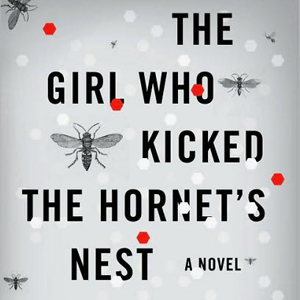 The Girl Who Kicked the Hornet’s Nest
The Girl Who Kicked the Hornet’s Nest is the third of a trilogy of books written by Mr. Larsson and in my opinion the best of the trio. It is a continuation of the first two books, The Girl with the Dragon Tattoo
and The Girl Who Played with Fire
. You will best appreciate it if you have read the others and be familiar with the main characters and the ongoing storyline. However, this last book is the one to read if you only reading one, as there is an attempt to summarize some of the previous plots but this will not capture all the intrigue of the earlier books. In the third book there are some new nefarious villains and lots of police types, some good and some not so good. There is a complicated plot, several murders and a great courtroom scene. The reader learns about Sapo, a secret law enforcement agency and an ultra secret component of that agency, as well as a special government agency mandated to prosecute threats to the Swedish constitution. It all seems unfamiliar but ultimately understandable as the plot unfolds. It might be the same if a non-American reader were reading a novel with a convoluted plot, which involved the FBI, secret components within the CIA and actions by the Attorney General of the United States. We would understand the organizations, might believe that they could do secret horrific things depicted in the book but yet also realize that we are most probably dealing with the imagination of the author.
One of the main characters is Mikael Blomkvist a crusading journalist who was an editor and one of the founders of the magazine Millennium with whom the author perhaps identified. An Internet search about real life author Stieg Larsson reveals that he was a journalist who founded the Swedish magazine Expo and was a life time opponent of fascists, neo Nazis and the extreme right wing in Sweden. He gave lectures about right wing extremists at Scotland Yard and lived under constant threat from right wing violence. When neo-Nazis murdered a labor-union leader in his home in 1999 in Sweden, the police discovered photos of and information about Larsson and his lifetime companion Eva Garbrielson in the murderer’s apartment. It was reported that the reason Larsson and Garbrielson never married or registered as a domestic couple was because they would have to officially report their address and might be endangered by doing so Larsson also wrote a book for the Swedish Union of Journalists of instructions on how journalists should respond to threats. It is easy to see that many of the experiences Mikael Blomkvist in Larsson’s novel could have come from the author’s experience or concern’s about what could really happen to a crusading journalist. Another reason I suspect Larsson identified with his character of Blomkvist and might have wanted to be like him, because he is depicted as a very smart cool guy with the highest journalist ethics. Also, quite a few of the women characters in this book and the previous two were very attracted to him and ended up in bed with him.
While not the main focus of the book, there are clear themes of sexual freedom and feminism which reflect the more openness in Sweden in dealing with all aspects of these issues. Berger an important woman editor in the book is very comfortable having a sexual relationship with Blomkvist although she is happily married with a very good sexual relationship with her husband who accepts her attraction and frequent beddings with her fellow journalist. A “muscular” but very attractive policewoman is an important lover of Blomkvist. There are descriptions of people comfortably in lesbian, gay and threesome relationships, which come up as side issues although not driving the story. Trafficking in young girls was an important part of the plot of the second book and derivatives of this situation continue into the final book of the trilogy. The “Girl” is Lisabeth, is a thin small boned young women, who has been sexually abused, is bisexual but yet constantly overcomes powerful men by her brain and her physical prowess. This is a young woman triumphing over her own abuse, which is a victory for herself, all women and obviously for a better society.
Whether it is the characters themselves, the enormity of the plot or the complicated mysteries that need to be solved by the police and the journalists, Stieg Larsson has captured the imagination of more than 20 million readers in 41 countries. In 2008 he was the second best selling author in the world. His untimely death by a heart attack in 2004 at the age of 50, before any of his novels were published, robbed the world of a talented author. Although he may further live on through his work, as I understand that there were some unpublished, unfinished manuscripts in his computer when he died, which might have the making of at least one novel and maybe more.

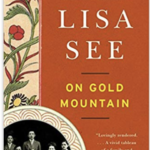

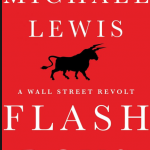

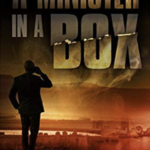
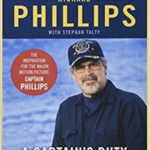



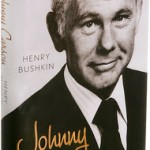



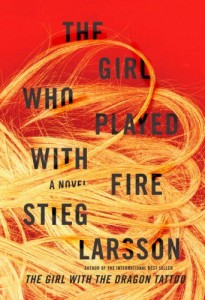 This is the second of three mystery novels written by Stieg Larsson who presented them to his publisher shortly before he died in 2004. It’s success in sales is no doubt at least in part due to the ride on the coattails of the first published novel,
This is the second of three mystery novels written by Stieg Larsson who presented them to his publisher shortly before he died in 2004. It’s success in sales is no doubt at least in part due to the ride on the coattails of the first published novel, 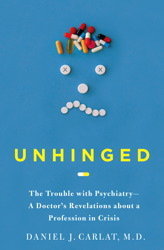
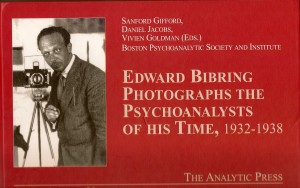
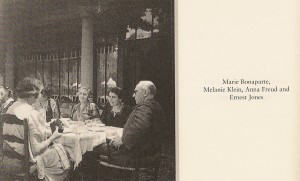
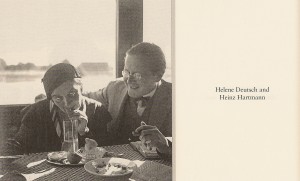
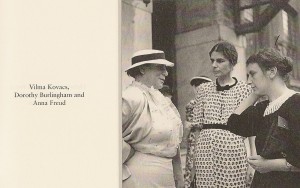
 There are novels, which have a great plot, or story, which grabs the reader and takes them to a new place with new ideas. Then there are books which present fictional segments of life which may or may not flow together but give the reader a worthwhile journey . This work falls in the latter category and I haven’t yet made up my mind how glad I am that I took.this trip. Mr. Mc Cann certainly provided a very insightful look at the meaning of the famous high wire walk between two world trade center towers which took place more than 30 years ago. The hundreds or perhaps thousands of New Yorkers who looked up in the sky that morning were united for a period of time just as New Yorkers would be united on 9/11 many years later. This time however people seemed to share a single focus on this distant figure on a wire in their ultimate appreciation of one person’s determination to achieve something which very few people on earth would even dream could be done. In contrast to this amazing feat we are exposed to the lives a series of people who had very little control over the defining moments of their lives. We meet a group of disparate women who are drawn together because their sons were killed in combat. A young man who was a kind of a Priest but really just wanted to help people but never got a chance to realize love once he found it. We follow the sad lives of New York City street hookers whose lives lead nowhere . Even the daughter of one who finds a way out of poverty which would have led her to the streets, escapes it only by a quirk of fate. If we needed to be reminded, we see how New York City is a melting pot of an untold number of untold stories. I recall riding the subway many years ago in this enormous city and wondering how many of these anonymous people might somehow be connected by some degrees of separation. There is no special meaning to the causal connection which some of the characters in the book have to each other . There is no real reason why most of the people should be in the same book. The world spins and the author clipped a few people who were living in New York and told us about part of their lives. He did a good job but it might have been a great book if there had been a well thought out story ( but that would have been a different book).
There are novels, which have a great plot, or story, which grabs the reader and takes them to a new place with new ideas. Then there are books which present fictional segments of life which may or may not flow together but give the reader a worthwhile journey . This work falls in the latter category and I haven’t yet made up my mind how glad I am that I took.this trip. Mr. Mc Cann certainly provided a very insightful look at the meaning of the famous high wire walk between two world trade center towers which took place more than 30 years ago. The hundreds or perhaps thousands of New Yorkers who looked up in the sky that morning were united for a period of time just as New Yorkers would be united on 9/11 many years later. This time however people seemed to share a single focus on this distant figure on a wire in their ultimate appreciation of one person’s determination to achieve something which very few people on earth would even dream could be done. In contrast to this amazing feat we are exposed to the lives a series of people who had very little control over the defining moments of their lives. We meet a group of disparate women who are drawn together because their sons were killed in combat. A young man who was a kind of a Priest but really just wanted to help people but never got a chance to realize love once he found it. We follow the sad lives of New York City street hookers whose lives lead nowhere . Even the daughter of one who finds a way out of poverty which would have led her to the streets, escapes it only by a quirk of fate. If we needed to be reminded, we see how New York City is a melting pot of an untold number of untold stories. I recall riding the subway many years ago in this enormous city and wondering how many of these anonymous people might somehow be connected by some degrees of separation. There is no special meaning to the causal connection which some of the characters in the book have to each other . There is no real reason why most of the people should be in the same book. The world spins and the author clipped a few people who were living in New York and told us about part of their lives. He did a good job but it might have been a great book if there had been a well thought out story ( but that would have been a different book). No doubt Elizabeth Strout is a talented insightful author who is able to use her main character, as well as well as those that are part of her life or cross paths with her, to mine a potpourri of human emotions more often on the bitter side. In each of her 13 chapters she deals mostly with a retired school teacher’s trials and tribulations whether it be with Henry her husband and long time pharmacist of their small town in Maine, Christopher her only son who doesn’t deliver her expectations as far their mother-child adult relationships or others whom she has encountered. Each story dealt with an original slice of life with unflinchingly honest depiction of the inner thoughts of Olive and the other characters. However, I have to admit, I had no problem putting down ( or shutting off my Kindle ) and never was in a rush to fire it up. I must be in the minority here as this is a Pulitzer winning book. Perhaps I am looking for a more refreshing uplifting or challenging reading experience that offers a new twist on the usual conflicts of life. I could easily understand why her son while dutiful was not anxious to be steeped in his mother’s needy wish for payback. This even made me reflect of how I hope that I would not put that expectation on my own kids (although I suppose I could), which allowed me to give some credit and value to this reading assignment. The concluding experience of Olive in her older age which allowed her to appreciate her need to love and be loved was another well done literary accomplishment of this book. However when I weigh all, I still have to give a thumbs down to this book
No doubt Elizabeth Strout is a talented insightful author who is able to use her main character, as well as well as those that are part of her life or cross paths with her, to mine a potpourri of human emotions more often on the bitter side. In each of her 13 chapters she deals mostly with a retired school teacher’s trials and tribulations whether it be with Henry her husband and long time pharmacist of their small town in Maine, Christopher her only son who doesn’t deliver her expectations as far their mother-child adult relationships or others whom she has encountered. Each story dealt with an original slice of life with unflinchingly honest depiction of the inner thoughts of Olive and the other characters. However, I have to admit, I had no problem putting down ( or shutting off my Kindle ) and never was in a rush to fire it up. I must be in the minority here as this is a Pulitzer winning book. Perhaps I am looking for a more refreshing uplifting or challenging reading experience that offers a new twist on the usual conflicts of life. I could easily understand why her son while dutiful was not anxious to be steeped in his mother’s needy wish for payback. This even made me reflect of how I hope that I would not put that expectation on my own kids (although I suppose I could), which allowed me to give some credit and value to this reading assignment. The concluding experience of Olive in her older age which allowed her to appreciate her need to love and be loved was another well done literary accomplishment of this book. However when I weigh all, I still have to give a thumbs down to this book